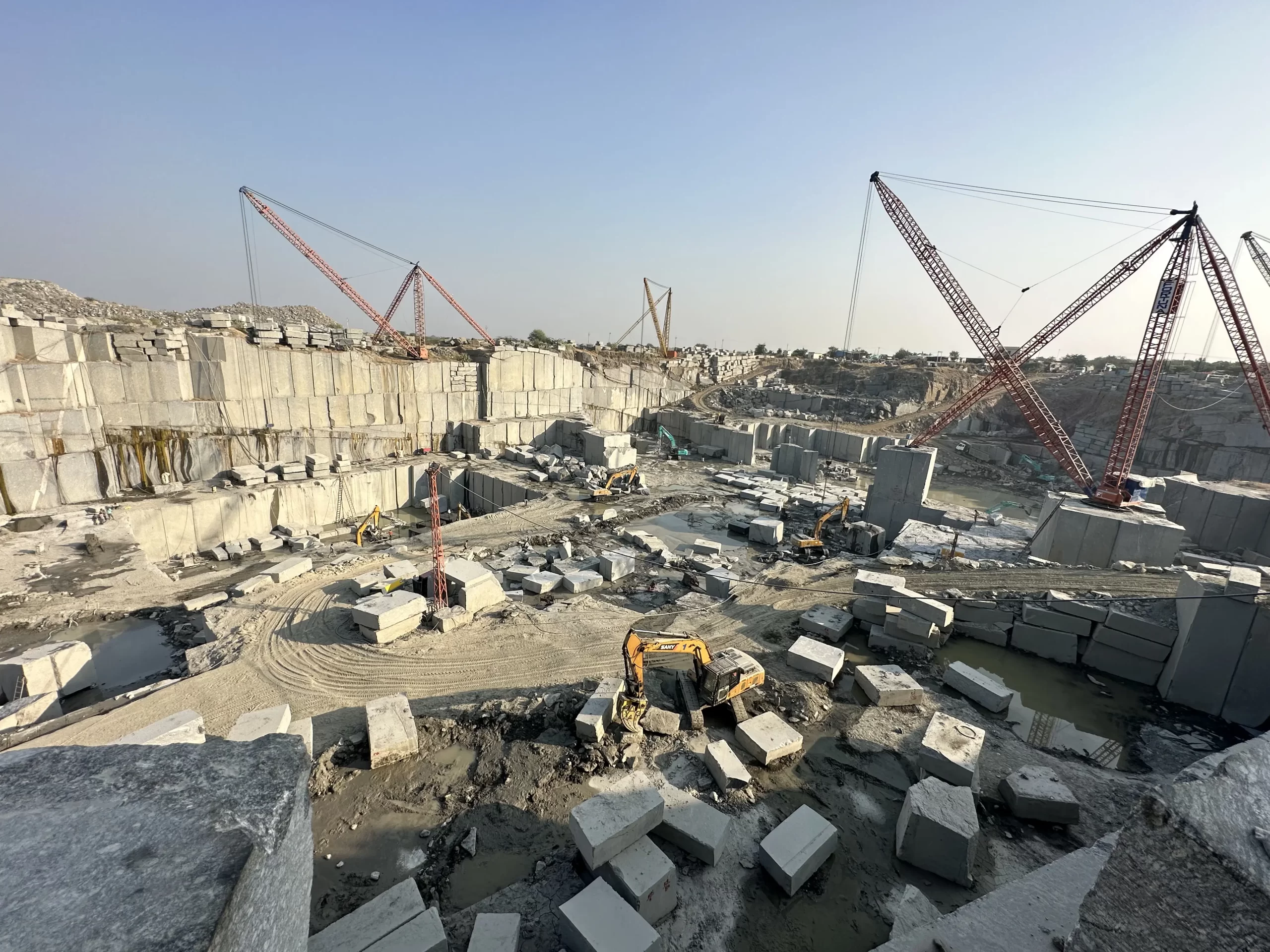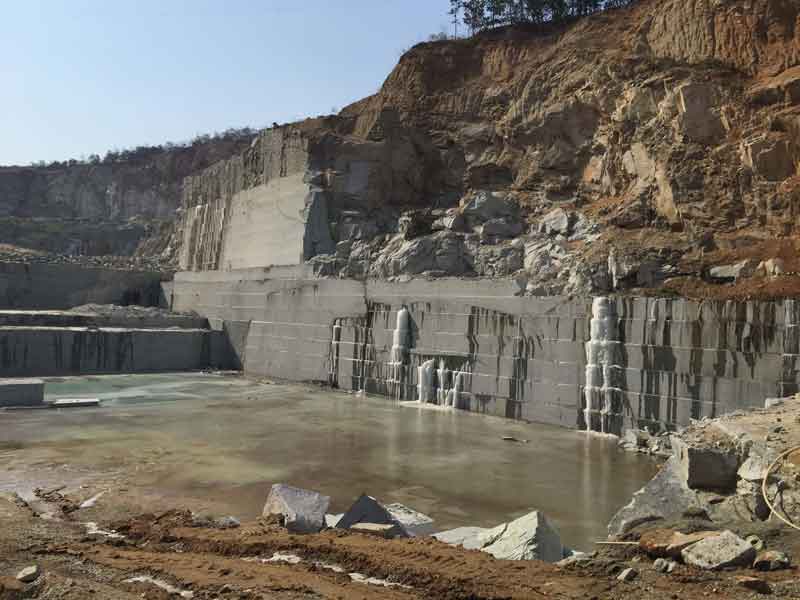Granite Quarries in South Africa Marvels: Exploring the Quarry Landscape
Granite Quarries in South Africa Marvels: Exploring the Quarry Landscape
Blog Article
Unleashing the Appeal and Resilience of Granite Quarry: A Journey Via Time
Granite quarries stand as testimonies to both the geological wonders of our earth and the long-lasting craftsmanship of mankind. As we peel off back the layers of time and dive into the complex world of granite quarrying, we discover a tale that not only showcases the appeal and durability of this impressive rock but additionally drops light on the extensive impact it has had on civilizations previous and existing.

The Beginnings of Granite Quarrying
In the record of background, the beginnings of granite quarrying can be traced back to ancient worlds where the quest for sturdy building materials sustained the development of this timeless craft. From the marvelous frameworks of old Egypt to the grand temples of Greece, granite has been respected for its strength, appeal, and durability. The Egyptians, with their sophisticated quarrying strategies, were amongst the first to extract granite widespread, using it to construct significant pyramids and detailed sculptures that have withstood the examination of time.
As civilizations advanced, so did the techniques of quarrying granite. The Romans further fine-tuned the strategies, establishing tools and equipment to essence and transportation granite over huge distances for their building jobs. The resilience and aesthetic appeal of granite made it a valued product for basilicas, monoliths, and sculptures throughout the ages.
Today, the heritage of ancient quarrying methods resides on, with contemporary technology boosting efficiency while still paying tribute to the workmanship of our forefathers. The origins of granite quarrying offer as a testament to human resourcefulness and the long-lasting allure of this noble stone.
Tools and Techniques of Quarrying
Discovering the precise workmanship of granite quarrying introduces an innovative selection of tools and methods carefully honed over centuries. Quarrying granite requires specific tools to extract the stone from the planet effectively and with precision. Modern quarries make use of diamond-wire saws, high-powered drills, and explosives to break apart the granite in a regulated manner. These tools permit for the extraction of big blocks of granite while minimizing waste and environmental effect.
Along with advanced machinery, standard hand devices are still made use of in specific quarrying procedures to make certain delicate accuracy in drawing out the stone. Chisels, hammers, and wedges are used by competent quarry employees to different granite blocks along natural fractures, a strategy that has been given with generations.
Furthermore, strategies such as drilling upright and horizontal openings for putting plumes and wedges, in addition to the regulated use of nitroglycerins in strategic locations, allow quarry workers to draw out granite effectively while protecting the integrity of the rock. The consistency between contemporary technology and traditional craftsmanship is crucial to the lasting quarrying of granite for generations to find.
Development of Granite Quarries
The transformation of granite quarries in time discloses an interesting story of technological development and industry evolution. From ancient times where manual tools like knives and hammers were used to draw out granite blocks, to the industrial transformation presenting steam-powered machinery for faster quarrying, the evolution of granite quarries has been marked by significant advancements. In current decades, the advent of diamond cord saws and progressed boring innovations has transformed the removal procedure, enabling more precise cuts and reduced waste of basic material.

Granite Quarrying in Modern Times
The development of granite quarrying techniques from historic reliance on handbook devices to the innovative methods of modern-day times emphasizes an exceptional i thought about this journey of technological development and sustainability techniques within the industry. In modern granite quarrying, progressed machinery such as diamond cord saws, high-capacity excavators, and digital boring devices have actually revolutionized the removal procedure. These devices boost performance, precision, and security, permitting for larger quantities of granite to be extracted in a much shorter duration contrasted to conventional techniques.
Furthermore, modern-day quarrying practices prioritize sustainability and environmental stewardship - granite quarries in south africa. Business are progressively taking on environment-friendly approaches like water reusing systems, dust suppression innovations, and recovery strategies for worn down quarries. These efforts aim to minimize the ecological influence of granite removal, save natural deposits, and bring back quarried landscapes to their original state
Additionally, the integration of electronic modern technologies like drones, general go to the website practitioner tracking, and 3D modeling has actually made it possible for quarry operators to optimize operations, boost decision-making, and ensure the sustainable administration of resources. By welcoming advancement and sustainability, the granite quarrying industry in modern times remains to prosper while maintaining environmental duty.

Maintaining and Safeguarding Granite Quarries
Among the evolving landscape of granite quarrying techniques, preservation and security of these useful all-natural websites have actually become critical worries for market stakeholders and ecological supporters alike. As granite quarries remain to be a vital resource of this desirable rock, it is important to take on lasting methods that ensure their durability and safeguard surrounding ecological communities.
Protecting granite quarries includes carrying out effective recovery plans to recover the land post-extraction. granite quarries in south africa. This process includes improving the terrain, replanting indigenous vegetation, and developing environments for wildlife to grow. By restoring quarries to their natural state, the environmental effect can be decreased, and the elegance of these landscapes can withstand for future generations to value
Additionally, protecting granite quarries requires enforcing guidelines that regulate responsible quarrying techniques. This includes tracking water top quality, managing dust emissions, and managing noise levels to alleviate disruptions read more to the setting and nearby neighborhoods. Collective efforts in between market players, governmental bodies, and conservation teams are crucial in maintaining these standards and ensuring the sustainable usage of granite quarries.
Conclusion
To conclude, the journey via time in granite quarrying reveals the origins, tools, strategies, and advancement of this technique. The modern period has brought improvements in quarrying techniques, enabling the preservation and defense of these useful natural deposits. It is very important to remain to support sustainable techniques to make sure the beauty and toughness of granite quarries for future generations to value.
Report this page